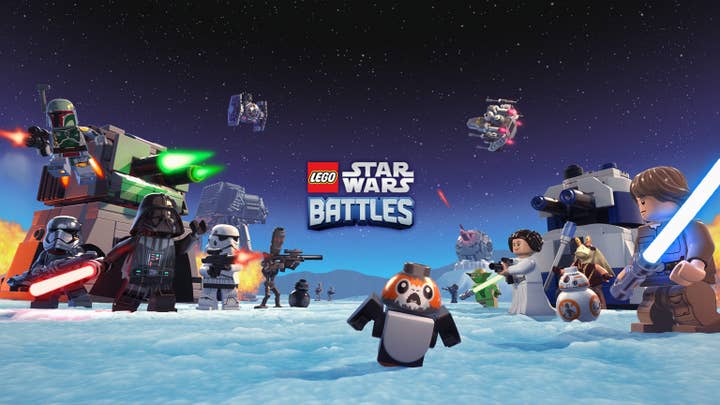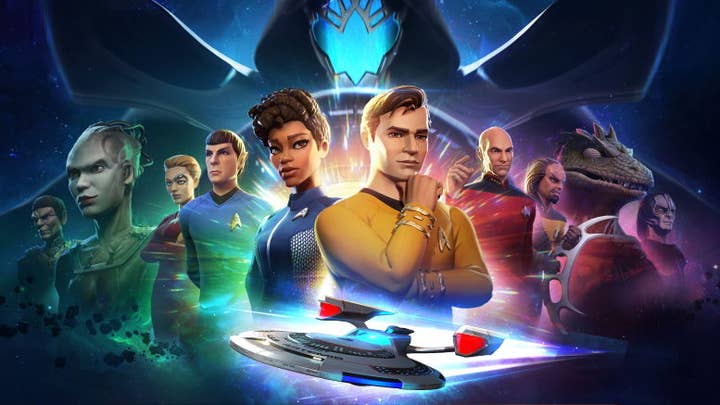Apple Arcade breaks free-to-play, but not how you'd think | Opinion
Professor at Seattle University Christopher A. Paul analyses why Apple's subscription service can make games built on free-to-play mechanics far less compelling to play
Launching in 2019, Apple Arcade promised players the ability to pay one low monthly fee for dozens of games and offered developers the chance to free themselves from the "shackles" of financing in mobile gaming. The service now boasts over 200 games that are devoid of ads or microtransactions in exchange for a small monthly fee.
It sure seems like subscription services like Apple Arcade could be the death knell of free-to-play, offering players a better value proposition and limiting the features of games some find exploitative.
However, two 2021 releases on Apple Arcade -- Star Trek Legends and Lego Star Wars Battles -- demonstrate another way Apple Arcade breaks free-to-play: it makes games built on established free-to-play mechanics far less compelling to play than if they had microtransactions.
The games
Star Trek Legends is a game that follows closely in the lines of free-to-play titles like Star Wars Galaxies, Marvel Strike Force, and Disney Sorcerer's Arena. New characters are unlocked with gacha boxes, teams of characters set out on battles, and fans can wage player vs player battles in an arena with the opposing team controlled by the game's AI.
Lego Star Wars Battles originally was in a soft beta launch as a free-to-play game, but the game was shuttered in June 2021 then resurrected later that fall as an Apple Arcade exclusive.
In the vein of Clash Royale or Gears Pop, Lego Star Wars Battles charges players with developing decks of cards that are deployed in a tower defense battle. Players earn a chest, or similar item, when they win and those objects are unlocked over time, which is the primary route to adding to your card collection. In all three games, getting more copies of a card makes it stronger, although the subscription version offers players a chance to speed their unlocks by playing more, while the free-to-play version of these games requires premium currency.

By including the games designed around microtransactions in Apple Arcade, the incentives for the games shift, as there are no payments or ads, making the amount of time players spend playing even more salient. Timers that restrict play are largely removed or their impact is lessened without free-to-play monetization and players are unable to spend their way past barriers.
The subscription version of these games sure feel better to play at first, but they don't hook players as thoroughly as their free-to-play versions because the relationships between the audience, time, and money are all changed.
Breaking the food chain
One of the fundamental pieces of free-to-play games is that in exchange for spending lots of money on a game, those who do are typically able to beat those who don't. This concept often takes the form of food chain analogies where free-to-play players are eaten by the minnows who spend sparingly and then up the chain to fish, dolphins, whales, and ultimately kraken.
Porting [free-to-play] mechanics without the surrounding structures is a half-measure that limits the pull of the game, further reducing the ongoing audience
However, when money isn't at stake, the food chain breaks and the hooks don't set between the game and the potential whales (or minnows). The only way to progress is to invest time, limiting who progresses through the game quickly and giving those players both the cards and the experience to dominate.
This has knock on impacts, as a smaller audience for the game (already limited to those who subscribe to Apple Arcade) means that matchmaking isn't nearly as robust as in a classic free-to-play title. Even in Gears Pop, which lasted fewer than two years on the market, I experienced far more consistent match ups than I have in Lego Star Wars Battles just weeks after its launch.
The smaller group of players also means that it is hard to form a community within the game. Star Trek Legends includes alliances as a nod toward guilds, but people quit the game so frequently that it is painfully difficult to find an alliance that is actively playing the game.
Free-to-play games depend on massive audiences where players are pitted against each other but porting the mechanics over without the surrounding structures is a half-measure that limits the pull of the game, further reducing the ongoing audience.

Binge and purge
A second limitation of hosting this style of game on Apple Arcade is the binge and purge cycle that comes with these games.
Free-to-play style games have been honed for years to make those first few minutes of play incredibly appealing. With traditional monetization, players inevitably hit a wall that pushes them away for a bit before they are drawn back. However, when on the Arcade, there's no push away. The game just keeps going and the sugar rush of starting eventually starts to overwhelm and just isn't as engaging.
Even more complicated is that developers don't have the same levers to pull as they can when money is involved. Star Wars Galaxies effectively gates consumption of content by charging energy or premium currency for attempts. Clash Royale limits how fast players can get cards and how long they play for by charging premium currency or forcing players to wait to open chests.
Even more complicated is that developers don't have the same levers to pull as they can when money is involved
Left without those layers, players can cruise through the content in Star Trek Legends, ripping through the story far faster than it can be developed.
Star Wars Lego Battles has the chest timers of Clash Royale, but they are unlocked by playing more battles, never inducing players to step away and compounding the impacts of a binge and purge cycle. This heightens the importance of time in the game, as those who invest massive amounts of time become more powerful in the game, even further wrecking the matchmaking.
When the only lever developers can pull is the time players invest in the game, using game design that depended on leveraging money doesn't work as well, requiring a more thorough redesign than simply putting the ability to play more in the places where premium currency was supposed to be.
Committing to the pot
Perhaps the most powerful dynamic that keeps players engaging with games that are designed as services is the sunk cost fallacy or, in more positive terms for the player, the idea that they become pot committed. The more time, money, and resources spent in a game, the harder it can be to walk away from it.
Without the robust social dynamics that come with massively multiplayer online games, all Star Trek Legends and Star Wars Battles have to differentiate players is time spent playing the game. And, unless a player gets quite deep into these games, hitting the level of time investment that makes players feel pot committed is highly unlikely. Money, in the form of that first in-game purchase, is a bigger hook, one that can hold a player through the middle part of the game and get them invested.

In the case of Apple Arcade, the presence of those other 200 games works against the stickiness of the individual games, as players are left with a constant contemplation of what other games they could be playing instead, leading to far more churn at the top of the most downloaded Apple Arcade games than turnover in the list of mobile games that generate the most revenue.
Integrating faux premium currency into these games is also fascinating, as in both Star Trek Legends and Star Wars Lego Battles you can see where players would be asked to spend, but the games go about resolving their currency redesign in different ways.
Star Trek Legends overwhelms the player with what once was premium, especially early in the game, trivializing a lot of the content and letting players become powerful incredibly quickly.
Star Wars Lego Battles has fairly tight restrictions on premium currency, made all the more amusing by a store and special offers that are almost completely unaffordable within the scope of the currency awarded in the subscription version of the game. In both games, premium currency is like a phantom appendage. You no longer see what was once there and it just doesn't feel quite right.
Where this leaves things
I have spent a whole lot of time and a not inconsiderable amount of money playing games like these (all in the name of research, right?) and it is professionally fascinating to see how games are warped and twisted when they move into other revenue structures.
I'm also under no delusion that I know more than Apple and the various developers who I'm sure have detailed statistics and information about who is playing, how long they are playing, and how they churn through games. I expect that this is part of the drive behind Apple's efforts at focusing on player retention in their contracts with developers.
As Matthew Reynolds puts it in Eurogamer, games like these are effectively stuck between two worlds, where they have hallmarks of free-to-play and also the dynamics of a fully unlocked subscription or premium title. They are neither this nor that. And, in a way, games like these are a funhouse version of the tumult that came with the loot boxes included in Star Wars Battlefront II.
Instead of porting a clunky system of generating revenue onto a genre of games that had established norms and practices, developing for Apple Arcade means ripping microtransaction systems out of games. Although this move leads to more positive reviews and less vitriol than it did when EA put the monetization strategy of sports games like FIFA into a shooter, it doesn't necessarily make for better, more engaging games. When games that are designed to be free-to-play end up on Apple Arcade, developers would be well served to think about all the hooks in their game and what really engages players in a new environment for play.